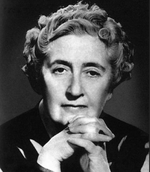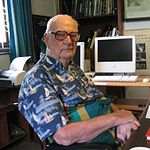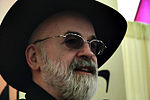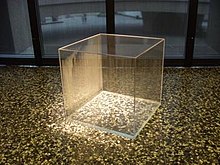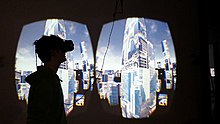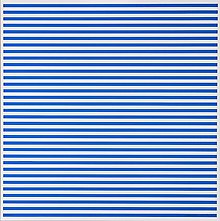Genre fiction, also known as popular fiction, is a term used in the book-trade for fictional works written with the intent of fitting into a specific literary genre, in order to appeal to readers and fans already familiar with that genre.
A number of major literary figures have written genre fiction. John Banville publishes crime novels as Benjamin Black, and both Doris Lessing, and Margaret Atwood have written science fiction. Georges Simenon, the creator of the Maigret detective novels, has been described by André Gide as "the most novelistic of novelists in French literature".
The main genres are crime, fantasy, romance, science fiction, Western, inspirational, historical fiction, and horror. More commercially oriented genre fiction has been dismissed by literary critics as poorly written.
A number of major literary figures have written genre fiction. John Banville publishes crime novels as Benjamin Black, and both Doris Lessing, and Margaret Atwood have written science fiction. Georges Simenon, the creator of the Maigret detective novels, has been described by André Gide as "the most novelistic of novelists in French literature".
The main genres are crime, fantasy, romance, science fiction, Western, inspirational, historical fiction, and horror. More commercially oriented genre fiction has been dismissed by literary critics as poorly written.
Genre and the marketing of fiction
In
the publishing industry the term "category fiction" is often used as a
synonym for genre fiction, with the categories serving as the familiar
shelf headings within the fiction section of a bookstore, such as Western or mystery.
The uncategorized section is known in the industry as "general
fiction", but in fact many of the titles in this usually large section
are often themselves genre novels that have been placed in the general
section because sellers believe they will appeal, due to their high
quality or other special characteristics, to a wider audience beyond
readers of that specific genre.
Some adult fans are embarrassed to read genre fiction in public.
Some authors known for literary fiction have written novels under
pseudonyms, while others have employed genre elements in literary
fiction.
Romance fiction had an estimated $1.375 billion share in the US
book market in 2007. Religion/inspirational literature followed with
$819 million, science fiction/fantasy with $700 million, mystery with
$650 million and then classic literary fiction with $466 million.
History of genres
Genre began as a classification system for ancient Greek literature. Poetry, prose, and drama had specific calculated styles that related to the theme of the story. Among the genres were the epic in poetry and tragedy and comedy for plays. In later periods other genres such as the chivalric romance, opera, and prose fiction developed.
Though the novel is often seen as a modern genre, Ian Watt, in The Rise of the Novel (1957) suggests that the novel first came into being in the early 18th century,
it has also been described as possessing "a continuous and
comprehensive history of about two thousand years", from the time of
both Classical Greece and Rome.
The "romance" is a closely related long prose narrative. Walter Scott
defined it as "a fictitious narrative in prose or verse; the interest
of which turns upon marvellous and uncommon incidents", whereas in the
novel "the events are accommodated to the ordinary train of human events
and the modern state of society". However, many romances, including the historical romances of Scott, Emily Brontë's Wuthering Heights and Herman Melville's Moby-Dick,
are also frequently called novels, and Scott describes romance as a
"kindred term". Romance, as defined here, should not be confused with
the genre fiction love romance or romance novel. Other European languages do not distinguish between romance and novel: "a novel is le roman, der Roman, il romanzo."
Genre fiction developed from various subgenres of the novel (and
its "romance" version) during the nineteenth century, along with the
growth of the mass-marketing of fiction in the twentieth century: this includes the gothic novel, fantasy, science fiction, adventure novel, historical romance, and the detective novel. Some scholars see precursors to the genre fiction romance novels in literary fiction of the 18th and 19th centuries, including Samuel Richardson's sentimental novel Pamela, or Virtue Rewarded (1740) and the novels of Jane Austen such as Pride and Prejudice (1813).
The genres
The following are some of the main genres as they are used in contemporary publishing:
Crime
Crime fiction is the literary genre that fictionalises crimes, their detection, criminals, and their motives. It is usually distinguished from mainstream fiction and other genres such as historical fiction or science fiction, but the boundaries are indistinct. Crime fiction has multiple subgenres, including detective fiction (such as the whodunit), courtroom drama, hard-boiled fiction, mystery fiction, and legal thrillers. Suspense and mystery are key elements to the genre.
Fantasy
Fantasy is a genre of fiction that uses magic or other supernatural elements as a main plot element, theme, or setting. Many works within the genre take place in imaginary worlds where magic and magical creatures are common. Fantasy is generally distinguished from the genres of science fiction and horror
by the expectation that it steers clear of scientific and macabre
themes, respectively, though there is a great deal of overlap among the
three, all of which are subgenres of speculative fiction. Fantasy works frequently feature a medieval setting.
Romance
The romance novel or "romantic novel" primarily focuses on the relationship and romantic love between two people, and must have an "emotionally satisfying and optimistic ending." There are many subgenres of the romance novel including fantasy, historical, science fiction, same sex romantic fiction, and paranormal fiction.
There is a literary fiction form of romance, which Walter Scott defined as "a fictitious narrative in prose or verse; the interest of which turns upon marvellous and uncommon incidents".
According to Romance Writers of America's data, the most popular subgenres are: Romantic suspense, Contemporary romance, Historical romance, Erotic romance, Paranormal romance, Young adult romance, and Christian romance
Science fiction
Science fiction is a genre of speculative fiction dealing with imaginative concepts such as futuristic science and technology, space travel, time travel, faster than light travel, parallel universes and extraterrestrial life. Science fiction often explores the potential consequences of scientific and other innovations, and has been called a "literature of ideas". It usually eschews the supernatural, and unlike the related genre of fantasy, historically science fiction stories were intended to have at least pretense of science-based fact or theory at the time the story was created, but this connection has become tenuous or non-existent in much of science fiction.
Inspirational
Inspirational fiction has faith-based themes, which may overlap with Philosophical fiction or Theological fiction.
It may be targeted at a specific demographic, such as Christians.
Modern inspirational fiction has grown to encompass non-traditional
subgenres, such as inspirational thrillers.
Horror
Horror fiction
aims to frighten or disgust its readers. Although many horror novels
feature supernatural phenomena or monsters, it is not required. Early
horror took much inspiration from Romanticism and Gothic fiction. Modern horror, such as cosmic horror and splatterpunk, tends to be less melodramatic and more explicit. Horror is often mixed with other genres.
Critical reception and controversies
A
number of major literary figures have written either genre fiction
books, or books that contain genre fiction elements. For instance, the
novel Crime and Punishment by Fydor Dostoevsky contains elements of the crime fiction genre. Gabriel García Márquez's Love in the Time of Cholera is a romance novel. Frankenstein and Dracula are gothic horror novels. Graham Greene at the time of his death in 1991 had a reputation as a writer of both deeply serious novels on the theme of Catholicism, and of "suspense-filled stories of detection". Acclaimed during his lifetime, he was shortlisted in 1966 for the Nobel Prize for Literature. The Nobel laureate André Gide stated that Georges Simenon, best known as the creator of the fictional detective Jules Maigret, was "the most novelistic of novelists in French literature".
Stephen King was awarded the Medal for Distinguished Contribution to American Letters;
but this polarized opinions and led to debate on genre fiction's
literary merit. Negative comments about genre fiction have sparked
responses from Time, Salon, the Atlantic, and the Los Angeles Review of Books. Nobel laureate Doris Lessing described science fiction as "some of the best social fiction of our time", and called Greg Bear, author of Blood Music, "a great writer".
In the 2000s, the BBC defended itself against charges that it had sneered at genre fiction, while the Man Booker and National Book Awards have been criticized for ignoring genre fiction in their selection process.
Some critics have claimed that reading romance and suspense
thrillers makes readers more sensitive, because these novels focus on
interpersonal relationships.
19th-century British and Irish genre fiction
Sir John Barrow's descriptive 1831 account of the Mutiny on the Bounty immortalised the Royal Navy ship HMS Bounty and her people. The legend of Dick Turpin was popularised when the 18th-century English highwayman's exploits appeared in the novel Rookwood in 1834.
Although pre-dated by John Ruskin's The King of the Golden River in 1841, the history of the modern fantasy genre is generally said to begin with George MacDonald, the influential author of The Princess and the Goblin and Phantastes (1858). William Morris was a popular English poet who also wrote several fantasy novels during the latter part of the nineteenth century. Wilkie Collins' epistolary novel The Moonstone (1868), is generally considered the first detective novel in the English language, while The Woman in White is regarded as one of the finest sensation novels. H. G. Wells's (1866–1946) writing career began in the 1890s with science fiction novels like The Time Machine (1895), and The War of the Worlds (1898) which describes an invasion of late Victorian England by Martians, and Wells is seen, along with Frenchman Jules Verne
(1828–1905), as a major figure in the development of the science
fiction genre. He also wrote realistic fiction about the lower middle
class in novels like Kipps (1905) and The History of Mr Polly (1910).
Penny dreadful publications were an alternative to mainstream works, and were aimed at working class adolescents, introducing the infamous Sweeney Todd. The premier ghost story writer of the 19th century was the Irish writer Sheridan Le Fanu. His works include the macabre mystery novel Uncle Silas 1865, and his Gothic novella Carmilla 1872, tells the story of a young woman's susceptibility to the attentions of a female vampire. The vampire genre fiction began with John William Polidori's "The Vampyre" (1819). This short story was inspired by the life of Lord Byron and his poem The Giaour. An important later work is Varney the Vampire
(1845), where many standard vampire conventions originated: Varney has
fangs, leaves two puncture wounds on the neck of his victims, and has
hypnotic powers and superhuman strength. Varney was also the first
example of the "sympathetic vampire", who loathes his condition but is a
slave to it. Bram Stoker, yet another Irish writer, was the author of seminal horror work Dracula and featured as its primary antagonist the vampire Count Dracula, with the vampire hunter Abraham Van Helsing his arch-enemy. Dracula has been attributed to a number of literary genres including vampire literature, horror fiction, gothic novel and invasion literature.
Sir Arthur Conan Doyle was born in Scotland of Irish parents but his Sherlock Holmes stories have typified a fog-filled London for readers worldwide
Sir Arthur Conan Doyle's Sherlock Holmes
is a brilliant London-based "consulting detective", famous for his
intellectual prowess, skilful use of astute observation, deductive
reasoning and forensic skills to solve difficult cases. Holmes' archenemy Professor Moriarty, is widely considered to be the first true example of a supervillain,
while Sherlock Holmes has become a by-word for a detective. Conan Doyle
wrote four novels and fifty-six short stories featuring Holmes, from
1880 up to 1907, with a final case in 1914. All but four Conan Doyle
stories are narrated by Holmes' friend, assistant, and biographer, Dr John H. Watson.
The Lost World literary genre was inspired by real stories of archaeological discoveries by imperial adventurers. H. Rider Haggard wrote one of the earliest examples, King Solomon's Mines in 1885. Contemporary European politics and diplomatic manoeuvrings informed Anthony Hope's swashbuckling Ruritanian adventure novels The Prisoner of Zenda 1894, and Rupert of Hentzau, 1898.
F. Anstey's comic novel Vice Versa 1882, sees a father and son magically switch bodies. Satirist Jerome K. Jerome's Three Men in a Boat 1889, is a humorous account of a boating holiday on the river Thames. Grossmith brothers George & Weedon's Diary of a Nobody 1892, is also considered a classic work of humour.
20th-century genre fiction
Early 20th century
Erskine Childers' The Riddle of the Sands (1903), defined the spy novel and Follett has also called it "the first modern thriller".
Emma Orczy's The Scarlet Pimpernel (1903) was originally a highly successful play, when staged in London in 1905. The novel The Scarlet Pimpernel
was published soon after the play opened and was an immediate success.
Orczy gained a following of readers in Britain and throughout the world.
The popularity of the novel, which recounted the adventures of a member
of the English gentry in the French Revolutionary
period, encouraged her to write a number of sequels for her "reckless
daredevil" over the next 35 years. The play was performed to great
acclaim in France, Italy, Germany and Spain, while the novel was
translated into 16 languages. Subsequently, the story has been adapted
for television, film, a musical and other media. Baroness Orczy's character The Old Man in the Corner (1908) was among the earliest armchair detectives to be created. Her short stories about Lady Molly of Scotland Yard (1910) were an early example of a female detective as main character.
John Buchan wrote the adventure novels on Prester John (1910) and four novels telling the adventures of Richard Hannay, of which the first, The Thirty-Nine Steps (1915) is the best known. Novels featuring a gentleman adventurer were popular in the interwar period, exemplified by the series of H. C. McNeile with Bulldog Drummond (1920), and Leslie Charteris, whose many books chronicled the adventures of Simon Templar, alias The Saint.
The medievalist scholar M. R. James wrote highly regarded ghost stories (1904–1928) in contemporary settings.
This was called the Golden Age of Detective Fiction. Agatha Christie,
a writer of crime novels, short stories and plays, is best remembered
for her 80 detective novels and her successful West End theatre plays.
Christie's works, particularly those featuring the detectives Hercule Poirot or Miss Marple,
made her one of the most important and innovative writers in the
development of the genre. Her most influential novels include The Murder of Roger Ackroyd (1926); one of her most controversial novels, its innovative twist ending had a significant impact on the genre), Murder on the Orient Express (1934), Death on the Nile (1937) and And Then There Were None (1939). Other female writers dubbed "Queens of crime" include Dorothy L. Sayers (gentleman detective, Lord Peter Wimsey), Margery Allingham (Albert Campion, supposedly created as a parody of Sayers' Wimsey) and New Zealander Ngaio Marsh (Roderick Alleyn). Georgette Heyer recreated the historical romance genre since 1921, and also wrote detective fiction (1932–1953).
A major work of science fiction, from the early 20th century, is A Voyage to Arcturus by Scottish writer David Lindsay, first published in 1920. It combines fantasy,
philosophy, and science fiction in an exploration of the nature of good
and evil and their relationship with existence. It has been described
by critic and philosopher Colin Wilson as the "greatest novel of the twentieth century", and was a central influence on C. S. Lewis's Space Trilogy. Also J. R. R. Tolkien said he read the book "with avidity", and praised it as a work of philosophy, religion, and morality. It was made widely available in paperback form when published as one of the precursor volumes to the Ballantine Adult Fantasy series in 1968.
From the early 1930s to late 1940s, an informal literary discussion group associated with the English faculty at the University of Oxford, were the "Inklings". Its leading members were the major fantasy novelists; C. S. Lewis and J. R. R. Tolkien. Lewis is known for The Screwtape Letters (1942), The Chronicles of Narnia (1950–1956) and The Space Trilogy (1938–1945), while Tolkien is best known as the author of The Hobbit (1937), The Lord of the Rings (1954–1955), and The Silmarillion (1977).
Later 20th-century
In thriller writing, Ian Fleming created the character James Bond 007
in January 1952, while on holiday at his Jamaican estate, Goldeneye.
Fleming chronicled Bond's adventures in twelve novels, including Casino Royale (1953), Live and Let Die (1954), Dr. No (1958), Goldfinger (1959), Thunderball (1961), The Spy Who Loved Me (1962), and nine short story works.
In contrast to the larger-than-life spy capers of Bond, John le Carré was an author of spy novels who depicted a shadowy world of espionage and counter-espionage, and his best known novel The Spy Who Came in from the Cold (1963), is often regarded as one of the greatest in the genre. Frederick Forsyth writes thriller novels, including The Day of the Jackal (1971), The Odessa File (1972), The Dogs of War (1974) and The Fourth Protocol (1984). Ken Follett writes spy thrillers, his first success being Eye of the Needle (1978), followed by The Key to Rebecca (1980), as well as historical novels, notably The Pillars of the Earth (1989), and its sequel World Without End (2007). Elleston Trevor is remembered for his 1964 adventure story The Flight of the Phoenix, while the thriller novelist Philip Nicholson is best known for Man on Fire. Peter George's Red Alert (1958), is a Cold War thriller.
War novels include Alistair MacLean thriller's The Guns of Navarone (1957), Where Eagles Dare (1968), and Jack Higgins' The Eagle Has Landed (1975). Patrick O'Brian's nautical historical novels feature the Aubrey–Maturin series set in the Royal Navy, the first being Master and Commander (1969).
Ronald Welch's Carnegie Medal winning novel Knight Crusader is set in the 12th century and gives a depiction of the Third Crusade, featuring the Christian leader and King of England Richard the Lionheart.
Nigel Tranter wrote historical novels of celebrated Scottish warriors; Robert the Bruce in The Bruce Trilogy, and William Wallace in The Wallace (1975), works noted by academics for their accuracy.
Science fiction
John Wyndham wrote post-apocalyptic science fiction, his most notable works being The Day of the Triffids (1951), and The Midwich Cuckoos (1957). George Langelaan's The Fly (1957), is a science fiction short story. Science fiction novelist Arthur C. Clarke's 2001: A Space Odyssey (1968), is based on his various short stories, particularly The Sentinel (1951). His other major novels include Rendezvous with Rama (1972), and The Fountains of Paradise (1979). Brian Aldiss is Clarke's contemporary.
Michael Moorcock
(born 1939) is a writer, primarily of science fiction and fantasy, who
has also published a number of literary novels. He was involved with the
'New Wave' of science fiction writers "part of whose aim was to invest
the genre with literary merit" Similarly J. G. Ballard (born 1930) "became known in the 1960s as the most prominent of the 'New Wave' science fiction writers". A later major figure in science fiction was Iain M. Banks who created a fictional anarchist, socialist, and utopian society named "The Culture". The novels that feature in it include Excession (1996), and Inversions (1998). He also published mainstream novels, including the highly controversial The Wasp Factory in 1984. Nobel prize winner Doris Lessing also published a sequence of five science fiction novels the Canopus in Argos: Archives between 1979 and 1983.
Fantasy
Terry Pratchett is best known for his Discworld series of comic fantasy novels, that begins with The Colour of Magic (1983), and includes Mort (1987), Hogfather (1996), and Night Watch (2002). Pratchett's other most notable work is the 1990 novel Good Omens.
Philip Pullman's fantasy trilogy His Dark Materials comprises Northern Lights (1995), The Subtle Knife (1997), and The Amber Spyglass (2000). It follows the coming-of-age of two children as they wander through a series of parallel universes against a backdrop of epic events.
Neil Gaiman is a writer of science fiction, fantasy short stories and novels, whose notable works include Stardust (1998), Coraline (2002), The Graveyard Book (2009), and The Sandman series.
Alan Moore's works include Watchmen, V for Vendetta set in a dystopian future UK, The League of Extraordinary Gentlemen, and From Hell, speculating on the identity and motives of Jack the Ripper.
Douglas Adams wrote the five-volume science fiction comedy series The Hitchhiker's Guide to the Galaxy, and also wrote the humorous fantasy detective novel Dirk Gently's Holistic Detective Agency.
Horror
Clive Barker horror novels include The Hellbound Heart (1986), and works in fantasy, Weaveworld (1987), Imajica and Abarat (2002).
Stephen King and Dean Koontz are two other famous contemporary horror writers.
Age categories
Most genres of fiction may also be segmented by the age of the intended reader:

